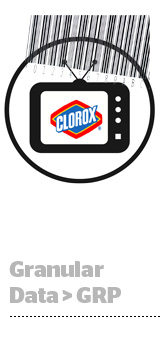 Simulmedia has sweetened its targeting capabilities for TV buyers.
Simulmedia has sweetened its targeting capabilities for TV buyers.
Through a strategic deal with consumer market research and retail analytics firm IRI, revealed Wednesday, marketers can now target their linear TV ads based on predictive purchase segments called IRI ProScores.
These segments determine consumers’ likelihood to purchase based on different propensities.
This is the first time IRI’s consumer purchase segments can be activated on TV, said Srishti Gupta, president of IRI’s Media Center for Excellence.
“We’re enabling a direct household-to-household match to national, linear television viewing data through Simulmedia, so [marketers can see] not only which shows are being watched, but what are the products most likely to be purchased,” Gupta said.
The Clorox Co. is one of the early testers of the partnership. The brand already applies IRI data in its marketing mix models, said Chris Neel, Clorox’s group manager for media, so it made sense to apply IRI to TV segments.
Clorox has found IRI data applies more universally to its products, Neel said. “[Other] shopper segments tend to be more heavily weighted to grocery, whereas we have a lot of products that fall outside of that category.”
And although Simulmedia has integrations to other shopper data partners like Nielsen Buyer Insights, which also combines panel and purchase data, IRI ProScores claims it offers unique insights into shopper affinities.
Because Simulmedia captures second-by-second viewing data, the goal is to merge purchase and viewing information in real time. Clorox specifically wants to understand how TV drives incremental sales – and will figure that out using lift studies.
The brand will also use Simulmedia/IRI to figure out which shows its audience watches and at what frequency.
“It’s allowing us to better identify programming on a national basis that has the propensity to reach our defined targeting sets,” Neel said. “Using data to perform direct matches creates more consistency in our buys versus piecing things together using lookalike models.”
AdExchanger Daily
Get our editors’ roundup delivered to your inbox every weekday.
Daily Roundup
TV used to be bought contextually (e.g., a planner would buy based on program ratings or broad demos). As more networks develop their own version of audience-based indexing, Clorox likes that Simulmedia is network agnostic.
In other words, its system isn’t limited to a single inventory source.
Simulmedia provides a direct match back to a sample of 7 million households across multiple MVPDs in 190 markets – all based on the US Census, according to Simulmedia President and CRO Tim Spengler.
“For mass brands, there hasn’t been enough targeting precision at the national level,” Spengler said. “In addressable TV, you can apply data, but it’s not mass reach. It’s not for mass brands. This is about moving the business of TV from proxies like GRPs and demographics to real metrics and currencies.”













